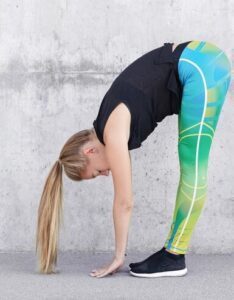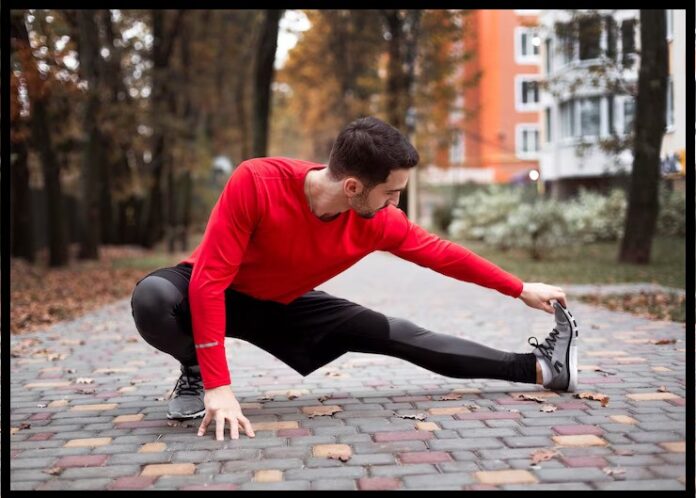Hyperbolic Stretching – In the pursuit of better health, enhanced physical performance, or simply a more flexible and limber body, many people turn to stretching exercises. One approach that has gained attention in recent years is hyperbolic stretching. Promising rapid gains in flexibility and range of motion, hyperbolic stretching is an advanced form that may seem intimidating to beginners. However, fear not! This comprehensive guide will demystify hyperbolic stretching techniques, particularly tailored for beginners. Whether you are an athlete looking to improve your performance or someone seeking greater flexibility and mobility, this article will provide valuable insights, practical tips, and actionable steps to help you get started with hyperbolic stretching.
What is Hyperbolic Stretching?
Before we delve into the techniques, let’s grasp the fundamental concept of hyperbolic stretching. Hyperbolic stretching is a unique and dynamic form that focuses on increasing flexibility through movement and active muscle engagement. Unlike traditional static stretching, where you hold a position for an extended period, hyperbolic stretching involves controlled activities pushing your muscles and connective tissues beyond their perceived limits.
The core principle of hyperbolic stretching is that your muscles possess untapped potential for stretching further than you might think. By gradually and safely pushing the boundaries of your flexibility, you can unlock this potential and significantly increase your range of motion.

The Benefits of Hyperbolic Stretching
Hyperbolic stretching offers a range of benefits, making it an attractive option for those looking to enhance their physical capabilities and overall well-being.
Improved Flexibility
One of the primary benefits of hyperbolic stretching is the rapid improvement in flexibility. This form of stretching targets the muscles and connective tissues, allowing you to achieve a more excellent range of motion in a shorter period.
- Enhanced Athletic Performance
Athletes, in particular, turn to hyperbolic stretching to gain a competitive edge. Increased flexibility translates to improved agility, reduced risk of injuries, and better overall performance in various sports.
- Better Posture
Hyperbolic stretching can improve posture by addressing muscle imbalances and promoting proper body alignment. Those who spend a lot of time at a desk may find this to be very helpful.
- Pain Reduction
For those with chronic pain or muscle stiffness, hyperbolic stretching can provide relief. It helps release muscle tension, alleviating discomfort and improving overall well-being.
- Stress Reduction
Like traditional stretching, hyperbolic stretching has a calming and stress-reducing effect on the body. Mindfully engaging in these exercises stresses and promotes a sense of hyperbolic
Stretching Techniques for Beginners.
Now that we’ve covered the basics, let’s explore some hyperbolic stretching techniques suitable for beginners. It’s essential to approach these exercises cautiously and gradually increase the intensity to avoid overstretching or injury.
1: Static Active Stretching
Static active stretching is an excellent starting point for beginners. This technique involves holding a stretch position with the help of your muscles without external assistance. Here’s how to do it:
Hamstring Stretch:
- Stretching your legs out, take a seat on the floor.
- Reach forward toward your toes, keeping your back straight.
- Hold the stretch for 15-30 seconds, feeling the time in your hamstrings.
- Repeat the stretch 2-3 times.
2: Dynamic Stretching
Dynamic stretching incorporates controlled movements that take your muscles through a full range of motion. It’s an effective way to improve flexibility while warming up your body. Here’s an example of dynamic stretching:
Leg Swings:
- Stand next to a support, such as a wall or a sturdy object.
- Hold onto the mount for balance.
- Controlfully swing one leg forward and backward.
- Repeat for 10-15 swings on each leg.
3: PNF (Proprioceptive Neuromuscular Facilitation) Stretching
PNF stretching is a more advanced technique that can yield significant flexibility gains. It involves a combination of stretching and contracting muscles. Here’s how to do a PNF stretch for your quadriceps:
Quadriceps PNF Stretch:
- With your legs straight, lie on your stomach.
-
Bring your heel up to your buttocks and bend one knee.
- Use your hand to gently push your heel toward your buttocks while contracting your quadriceps.
- Hold the contraction for 5-10 seconds, then relax and deepen the stretch.
- Repeat 2-3 times on each leg.
4: Hyperbolic Stretching Routine
To incorporate hyperbolic stretching into your routine, consider the following guidelines:
- Warm-Up: Always begin with a proper warm-up to prepare your muscles for stretching. Light aerobic exercises or dynamic stretches for 5-10 minutes can help.
- Slow and Controlled Movements: Perform each time slowly and progressively, avoiding sudden or jerky movements. Gradually ease into each time to prevent injury.
- Breathing: Pay attention to your breathing; deep, controlled breaths can help relax your muscles and facilitate deeper stretches.
- Duration: Aim to hold each period for 15-30 seconds and gradually extend the period as your flexibility improves. Over time, you can work towards holding periods for 60 seconds or more.
- Consistency: Be consistent with your stretching routine. Incorporate hyperbolic stretching into your daily or weekly exercise regimen to significantly improve flexibility and range of motion.
Frequently Asked Questions (FAQs)
Q1: Is hyperbolic stretching suitable for everyone?
Hyperbolic stretching can benefit most individuals, but it’s essential to consult with a healthcare professional before starting if you have any existing medical conditions or concerns. Pregnant women and people with specific injuries should approach hyperbolic stretching with caution.
Q2: How often should I practice hyperbolic stretching?
The frequency of your hyperbolic stretching routine can vary depending on your goals and fitness level. Beginners might start with 2-3 sessions per week and gradually increase as they become more comfortable with the exercises.
Q3: Can hyperbolic stretching cause injury?
While hyperbolic stretching can enhance flexibility, improper technique or overstretching can lead to injuries. It’s crucial to start slowly, listen to your body, and seek guidance from a qualified trainer if needed.
Q4: When can I expect to see results from hyperbolic stretching?
Results can vary from person to person, but with consistent practice, you may notice flexibility improvements within a few weeks. However, achieving significant gains may take several months of dedicated effort.
Q5: Should I take any specific precautions before starting hyperbolic stretching?
Before beginning a hyperbolic stretching routine, it’s advisable to:
- Speak with a healthcare professional, particularly if you are ill.
- Warm up adequately before stretching to reduce the risk of injury.
- Use proper form and technique to prevent overstretching.
Conclusion
Hyperbolic stretching may initially appear daunting, but beginners can unlock the remarkable benefits of improved flexibility and enhanced overall well-being with the proper techniques and a gradual approach. Remember to start slowly, be consistent with your practice, and prioritize safety. Whether you’re an athlete seeking to boost your performance or someone looking to enhance your flexibility, hyperbolic stretching can transform your physical capabilities and help you reach your goals. Embark on your journey today and experience the incredible benefits of hyperbolic extension.

